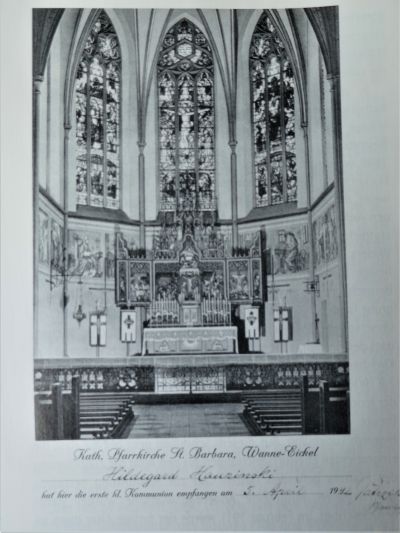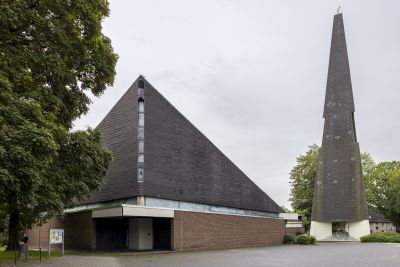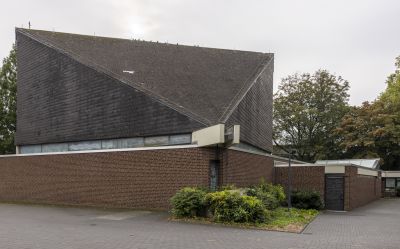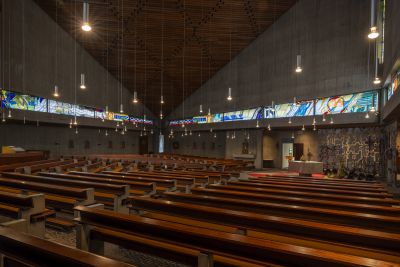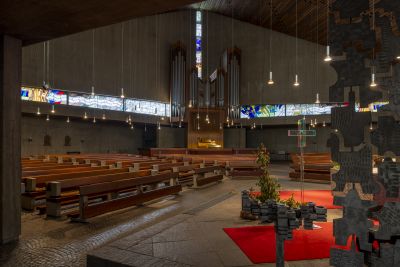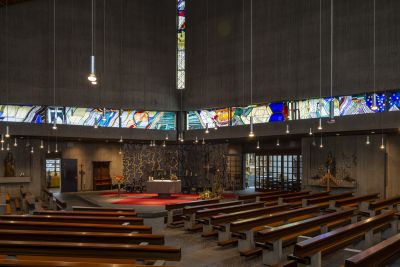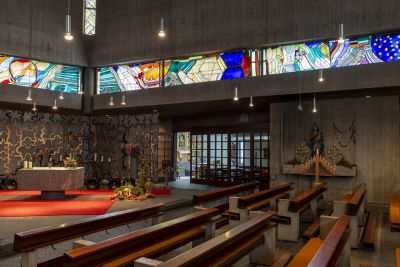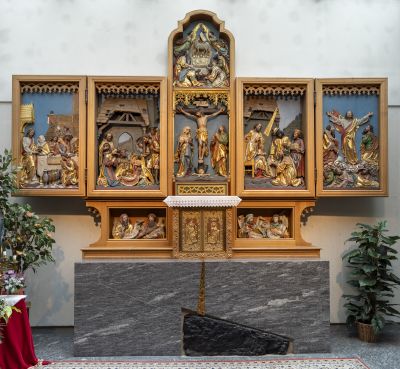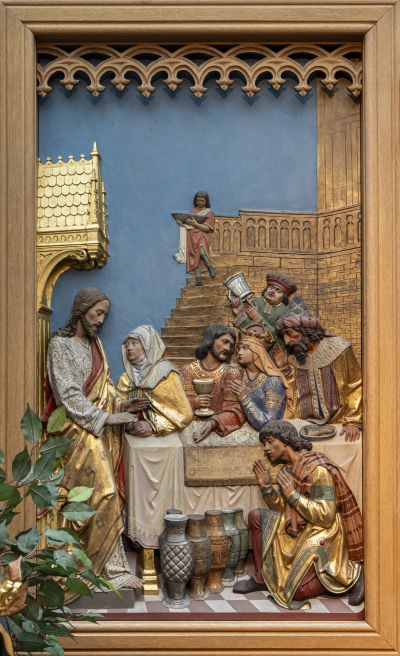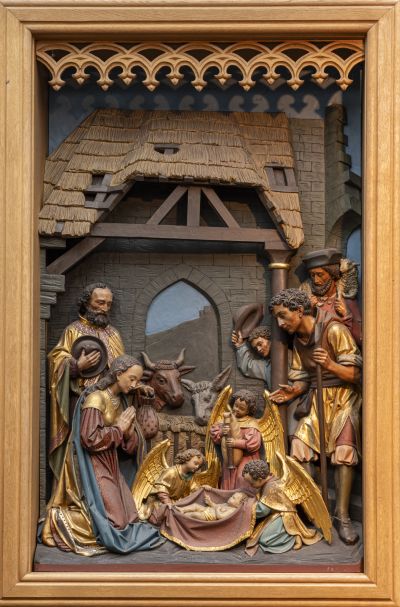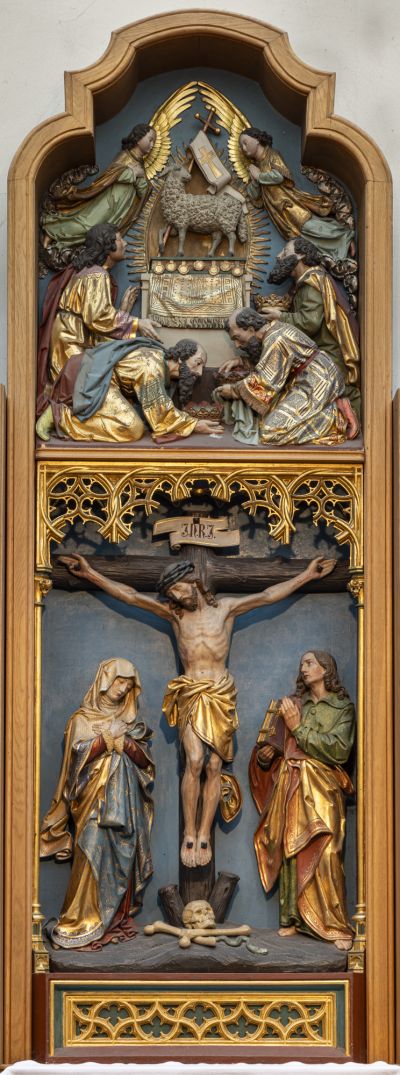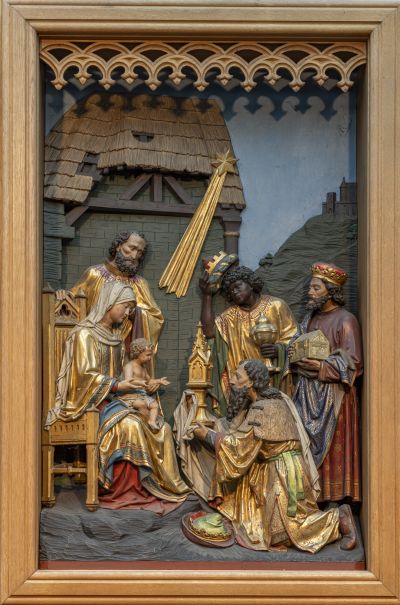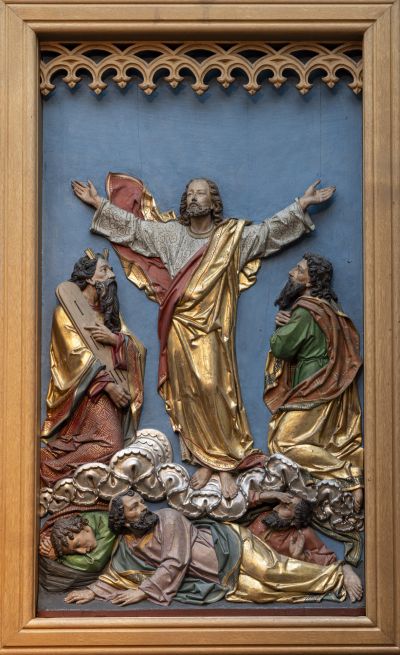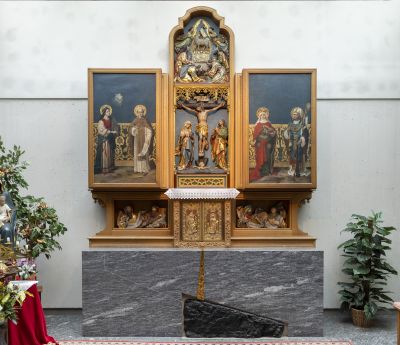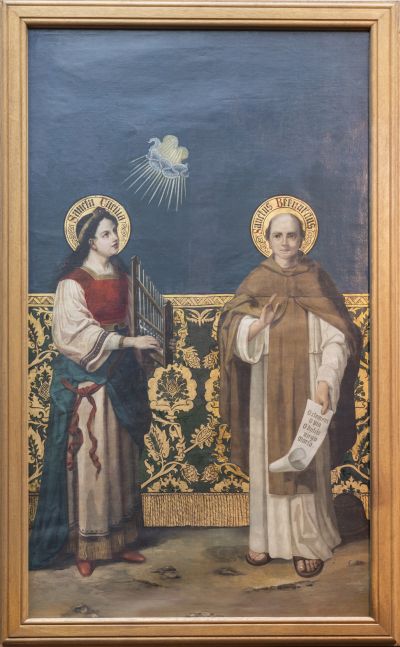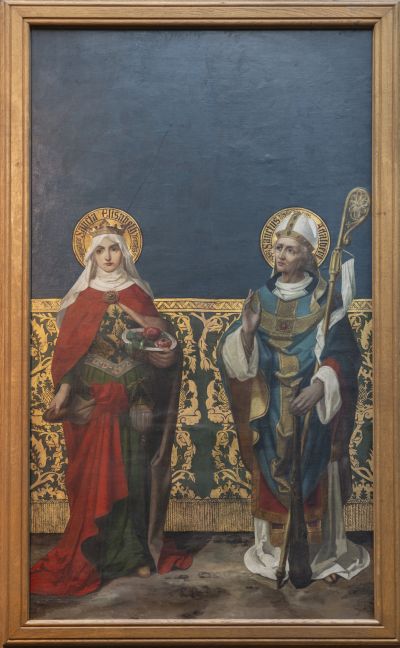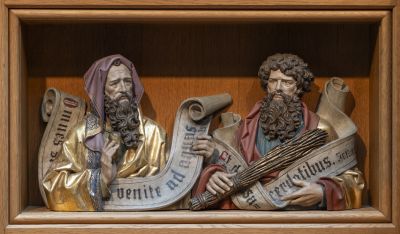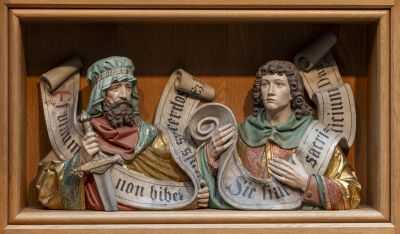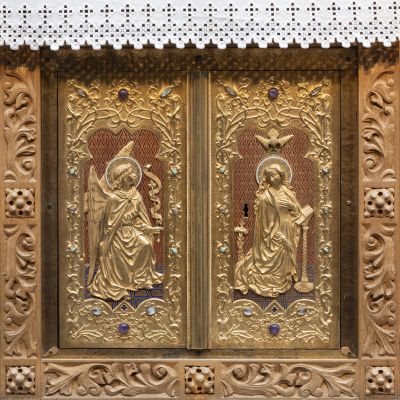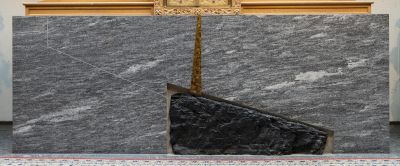Adalbert and Elisabeth – a Ruhr Polish altarpiece in Herne-Röhlinghausen
Mediathek Sorted

Ruhr Poles in Röhlinghausen
During the period of the German Empire (Kaiserreich), Polish immigrants brought their particular national style of Adalbert veneration to the Ruhr region. One impressive example of this is in Röhlinghausen, situated to the north-west of Bochum, which in 1926 was incorporated into the local district of Wanne-Eickel (and therefore, in 1975, into the district of Herne).
During the Industrial Revolution, Röhlinghausen experienced an extraordinary economic upturn. In 1806, just 117 people lived here; by 1830, that number had increased to 224. After the first deep mining shafts were sunk, the need for labourers to work the hard coal mine led to an enormous increase in the population after 1870 (in that year: 995). A large number of the immigrants were of Polish nationality. A census held on 1 January 1906 counted 11,733 inhabitants in total, of whom 4,731 were Poles and 1,334 Masurians. The Pluto-Thies and Königsgrube pits had a large proportion of Polish employees. Some miners’ settlements were inhabited almost entirely by Ruhr Polish families. In the local slang, the western end of Plutostraße was known as the “Polish cross-cut”.
During the pre-industrial era, the few Catholics living in Röhlinghausen were members of the Holy Mary congregation in Eickel. Due to the high level of immigration, the Catholic community founded its own congregation in 1898. On the street then known as Moltkestraße, a modest makeshift church was built and consecrated in the name of Saint Barbara, the patron saint of miners. Soon, it became too small to accommodate the congregation, and in 1909–12, it was replaced by an impressive neo-Gothic hall church (architect: Herman Wielers, Wattenscheid). Once again, Saint Barbara was selected as the church’s patron.
During the early years of the 20th century, between 20 and 35 percent of members of the church’s committees – the executive body of the church and the representatives of the local community – were of Polish nationality. Church associations were founded specifically with Ruhr Polish Catholics in mind. In Röhlinghausen, a “St. Adalbert Association” (St.-Adalbert-Verein) was established, which had 370 members in 1908, and which continued to exist until 1935. There is a registry entry from 1910 for the consecration of an association flag, and in 1912, an evening family event in remembrance of the priest Piotr Skarga (1536–1612), a well-known figure from the period of the Catholic Counter-Reformation in Poland, was documented.
A stamp on a postcard from around 1912–1920, showing a group of people in formal dress in front of the portal entrance to St. Barbara, also mentions an association for Catholic Poles for Röhlinghausen. Only a few women can be seen on the postcard. Several men wear miners’ parade uniforms; for others, the head covering indicates membership in a national Polish organisation. The ceremonial nature of the meeting is underlined by the large number of flags. According to a label written in pencil on the rear side of the postcard, the occasion was a Polish festival of St. Mary (N.M.P., uroczystości Mariackie).
It is recorded that in many towns and villages in the Ruhr region, the Polish members of the community donated money for the construction of a church, or Polish associations donated furnishings and decorations for their house of worship, including a missionary cross (in Recklinghausen-Hochlarmark), a confession chair (in Oberhausen-Osterfeld) and an altar dedicated to St. Joseph (in Dortmund-Eving). There is no written record for donations of this nature in Röhlinghausen. However, the image of the Holy Adalbert on the high altar of the Church of St. Barbara lends credence to the assumption that the St. Adalbert association made a financial contribution.

















































































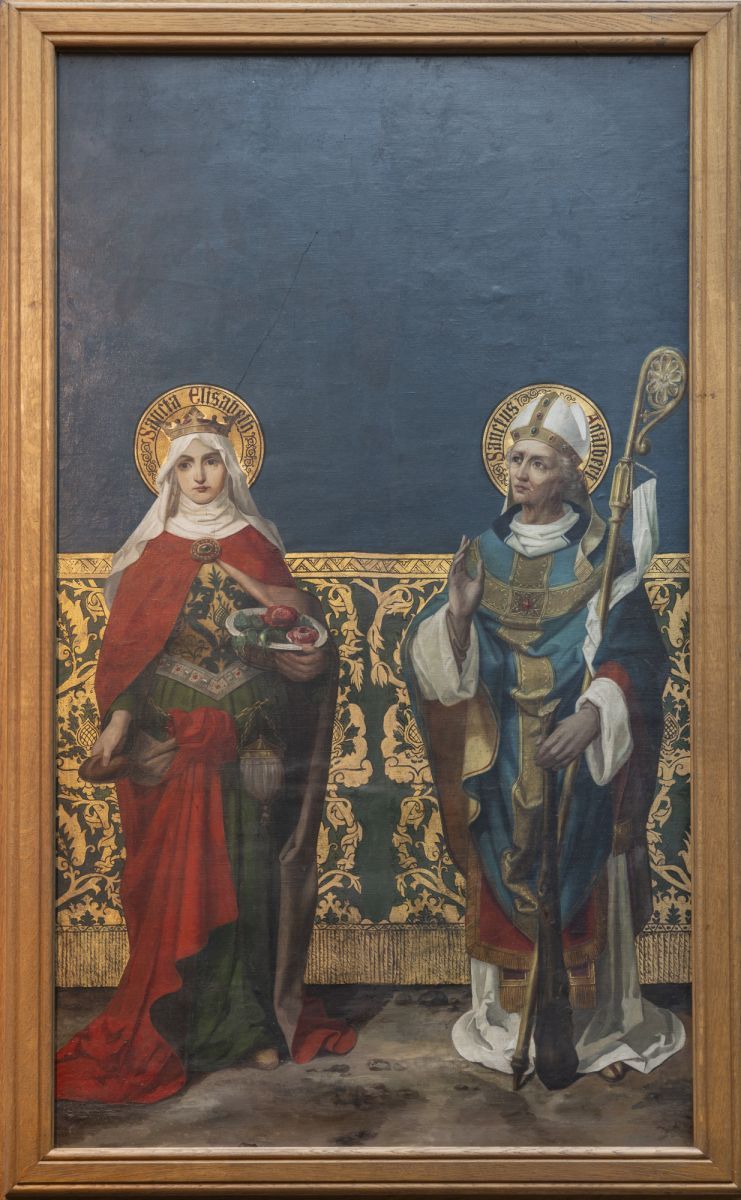
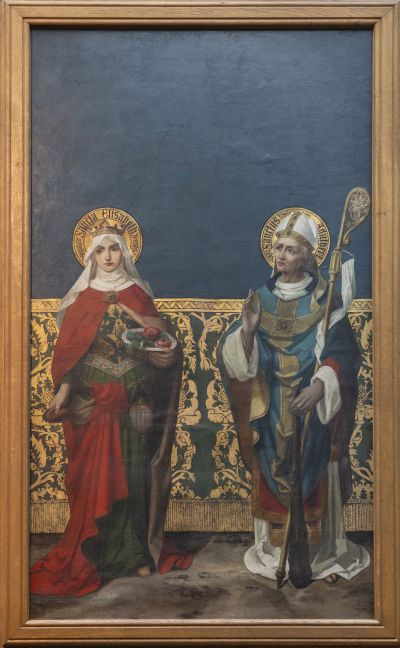
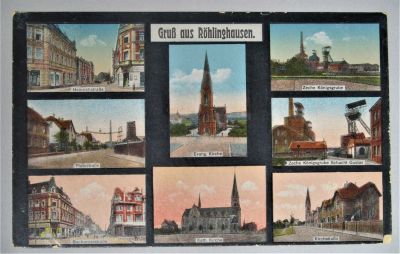
![A festively dressed group in front of the portal entrance to St. Barbara of Röhlinghausen A festively dressed group in front of the portal entrance to St. Barbara of Röhlinghausen - Photo card, 1912 at the earliest [the year of the church's consecration]](/sites/default/files/styles/width_100_tiles/public/assets/images/Festliche%20Gruppe.jpg?itok=S2wHhY3t)
